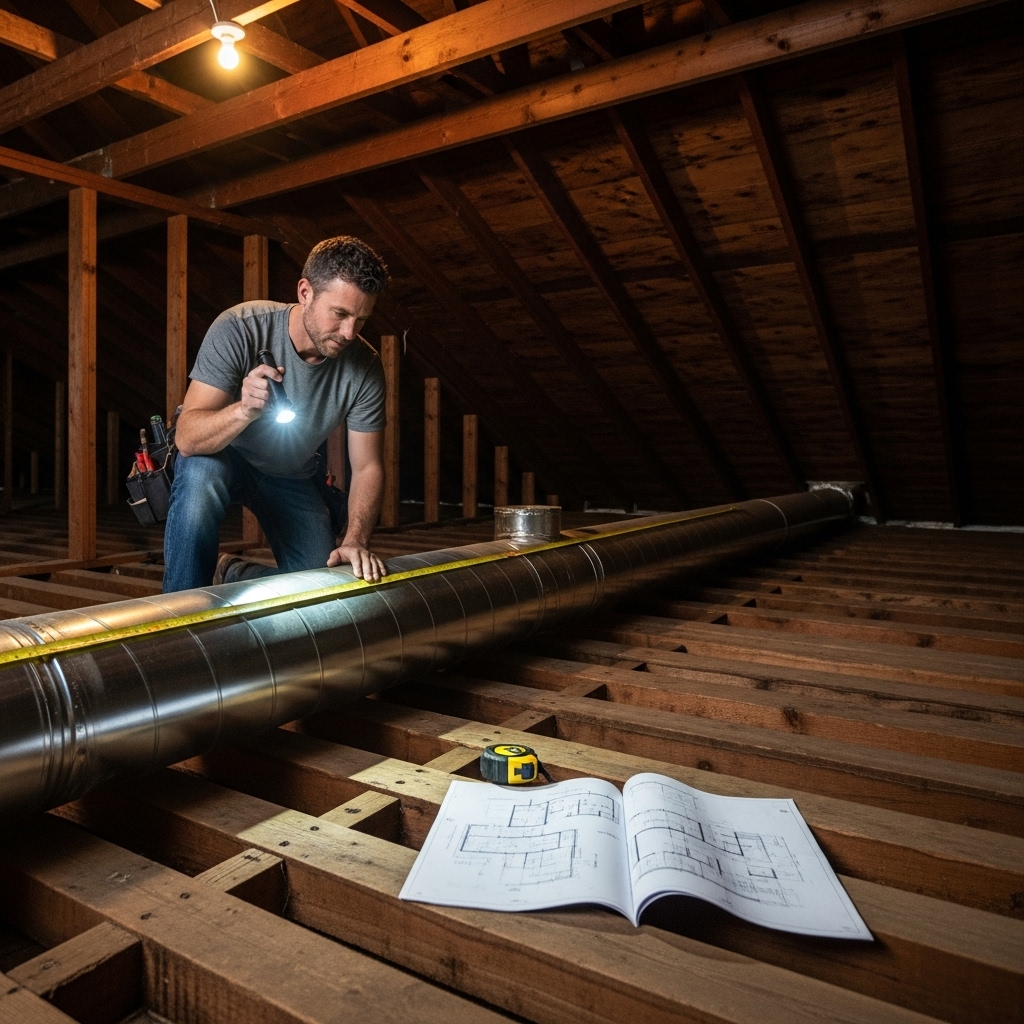A clear, well-ventilated dryer duct is essential for safety and performance, and Malibu, California homeowners face unique conditions that demand a diligent approach. Coastal air carries salt that can corrode exterior hoods, canyon winds affect damper behavior, and hillside construction often leads to long or vertical runs that trap lint more easily. Use this comprehensive checklist to assess your system, adopt smart habits, and plan regular maintenance. As you work through the steps, remember that thorough dryer vent cleaning complements these efforts by removing hidden buildup and verifying strong airflow from the dryer to the outside.
Know Your System
Start by mapping your vent path and documenting critical details. Understanding how your dryer expels air will help you maintain it effectively and communicate clearly with professionals when needed.
- Identify the dryer model and fuel type (electric or gas).
- Trace the vent route from the dryer connection to the exterior termination.
- Estimate duct length and count elbows or turns.
- Locate the termination point: side wall, roof, or eave.
- Note any access challenges such as steep roofs or tight laundry spaces.
- Record the duct material: smooth metal is preferred for the main run.
- Check the transition connector between the dryer and wall; semi-rigid metal is recommended.
Daily and Weekly Habits
Consistent small actions help keep airflow strong and reduce lint accumulation between professional visits.
- Clean the lint screen after every load.
- Rinse the lint screen periodically with warm water to remove residue.
- Avoid overloading the dryer; large, compressed loads shed more fibers.
- Vacuum dust around and behind the dryer regularly.
- Verify the dryer is not pushed so far back that it crushes the transition connection.
Monthly Checks
Use these monthly tasks to catch early issues before they slow drying times or strain your appliance.
- Observe the exterior damper during a cycle; it should open fully with strong exhaust.
- Gently brush away lint around the exterior hood.
- Listen for unusual noises from the dryer that may indicate airflow restriction.
- Confirm the laundry room does not feel excessively hot or humid while the dryer runs.
- Inspect the transition connector for kinks or crushing.
Seasonal Considerations for Malibu
Local conditions influence how quickly lint accumulates and how well dampers function. Adjust your maintenance based on Malibu’s coastal environment and seasonal patterns.
- After periods of heavy marine layer, check that the damper moves freely; moisture can encourage sticking.
- Following windy canyon days or dust events, inspect the hood for debris and verify full damper movement.
- If your property hosts frequent guests or rentals during peak seasons, plan for more frequent professional visits.
- Watch for corrosion on exterior components due to salt air, especially in oceanfront locations.
Material and Hardware Best Practices
The right materials reduce resistance and make future cleanings more effective.
- Use smooth metal ducts for the main vent run.
- Choose semi-rigid metal for the short transition connection; avoid thin foil or plastic.
- Secure joints with clamps or appropriate metal foil tape; avoid screws that protrude into the duct.
- Install a termination hood with a free-moving damper and no screen that could trap lint.
- Consider corrosion-resistant materials for exterior components in coastal areas.
Pre-Appointment Preparation
Make professional visits efficient and thorough with a bit of preparation.
- Clear a path to the laundry area; remove items on or around the dryer.
- Provide access to the exterior termination and roof if applicable.
- Note any symptoms: longer cycles, odors, or weak exterior airflow.
- Share the vent route details you documented, including length and elbows.
- Mention any pest activity observed near the exterior hood.
What a Thorough Cleaning Should Include
When you schedule professional service, expect a complete process that covers the entire vent path and verifies performance.
- Initial inspection and documentation of the vent route and materials.
- Protection of floors and finishes around the laundry area.
- Disconnection of the dryer and safe movement to create working space.
- Rotary brush agitation with simultaneous vacuum extraction to remove compacted lint.
- Exterior hood cleaning and damper function check, addressing corrosion or paint buildup.
- Airflow testing and temperature checks to confirm improvement.
- Reassembly with appropriate connectors and clamps, verifying a smooth transition path.
Post-Cleaning Actions
After the visit, confirm that performance meets expectations and set reminders for future maintenance.
- Run a drying cycle and verify strong, warm airflow at the exterior hood.
- Check that the damper opens fully and closes afterward without sticking.
- Ensure the dryer is positioned to avoid crushing the transition connector.
- Record the service date, observations, and any recommendations from the technician.
- Set a reminder for the next service interval based on usage and local conditions.
Troubleshooting Guide
Use this quick guide to decide when to take action and what steps to try first.
- Drying takes too long: Clean the lint screen, verify exterior damper movement, and check for a crushed transition connection. If issues persist, schedule a professional visit.
- Scorching odors: Stop the dryer and inspect for lint buildup around the lint trap and exterior hood. Arrange professional cleaning promptly.
- Exterior damper does not open: Confirm the dryer is running with a load. If movement is still weak, airflow may be restricted; call a professional.
- Visible lint around the exterior hood: Gently brush away accumulation and plan for a professional inspection to address internal buildup.
- Dryer shuts off or displays airflow alerts: Treat as a sign of restriction; book an inspection and cleaning.
Special Situations in Malibu Homes
Some properties need extra attention because of layout or usage patterns common in Malibu.
- Rooftop terminations: Ensure technicians are trained for safe roof access and inspection.
- Long attic runs with multiple elbows: Consider routing improvements during renovations to reduce resistance.
- Guest houses and rentals: Coordinate cleaning across all dryers on the property for consistent performance.
- Coastal corrosion: Periodically inspect exterior hoods and fasteners for rust or stiffness.
Frequently Asked Questions
Q: How often should Malibu homeowners schedule professional service? A: Many homes benefit from annual cleaning, while high-use households or rental properties may require shorter intervals. Track drying times and exterior airflow to refine your schedule.
Q: Can I clean the entire vent myself? A: You can handle light maintenance—cleaning lint screens, vacuuming the lint trap housing, and checking the exterior hood—but full duct cleaning requires specialized tools to avoid damage and ensure a thorough result.
Q: What materials are best for ducts and connectors? A: Smooth metal for the main run and semi-rigid metal for the transition connection. Avoid plastic or thin foil that collapses and increases heat.
Q: Are screens a good idea on the exterior hood? A: Screens trap lint and restrict airflow; choose a properly designed damper instead.
Q: What should I prepare before a professional visit? A: Clear access to the laundry area and termination point, note symptoms like long cycles or odors, and provide information about the vent path and any access challenges.
Put the Checklist Into Action
By following this checklist, you will create a safer, more efficient laundry routine tailored to Malibu’s environment. Combine smart daily habits, the right materials, and timely professional help to keep airflow strong and your appliance running smoothly. When you are ready for objective verification and a fully cleared duct, schedule expert dryer vent cleaning and enjoy the confidence that comes with a documented, end-to-end service.
Get Reliable Results for Your Malibu Home
Clear vents translate to shorter drying times, a cooler laundry room, and the peace of mind that comes from a well-maintained system. If you want a thorough assessment, detailed cleanup, and practical recommendations geared to Malibu’s coastal and hillside realities, book professional dryer vent cleaning today and keep your home running at its best.

